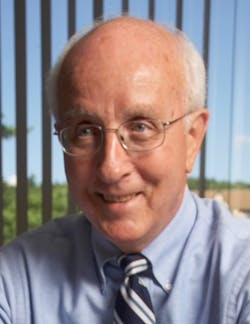
Like many, I was greatly saddened by the passing on January 27, 2015, of Charles H. Townes, the Nobel laureate whose work in Maser technology laid the foundation for the invention of the laser.
You will be reading much about Dr. Townes—or Charles, as asked to be called—so I won’t elaborate on his technology achievements. Instead, I would like to talk about the man and his personality that caused admiring students to surround him and respond to his knowledge challenges.
I actually did not interact with Charles that much. At several international photonics conferences, we were like ships that pass in the night, on the same sea, but headed in different directions. He to more theoretically related activities and to bask under the accolades due to him as one of the fathers of the laser, and me toward the more mundane world of teaching how to profit from the use of this technology.
Many years ago, as invited speakers at a photonics conference in Vienna, Charles and I were seated together at a banquet. Between courses, I shared a personal anecdote with him about my aborted career in magnetron manufacturing—a technology dear to him, as he was awarded the Nobel for his work in microwave amplification of stimulated emission of radiation (Masers) and I had worked on the product of his theory while in the Army and later turned down employment to continue in this technology, eventually pursing photonics. This was the Charles I knew, sincerely curious about what I had to say and asking penetrating questions about my interests, not sharing his.
Several years later, we had occasion to meet again after an LIA ICALEO conference in San Diego. He joined my wife and me at a hotel guest club where he again focused in on my interests, first about New England (where I live) and then about industrial laser processing. What was intended as a brief, relaxing interlude extended into a lengthy and stimulating, for me, discussion on the place for photonics in the manufacturing world. This episode reinforced my view of Charles as a person of great curiosity, a probing and somewhat gently demanding teacher—I then understood why his students rallied to him, a friendly, inquisitive personality who drew out the best in those he met.
My last view of Charles was the next morning at the airline terminal where he charged past, tugging his carry-on, headed for his next intellectual event at the age of 94—an inspiring figure I will l always recall with admiration.